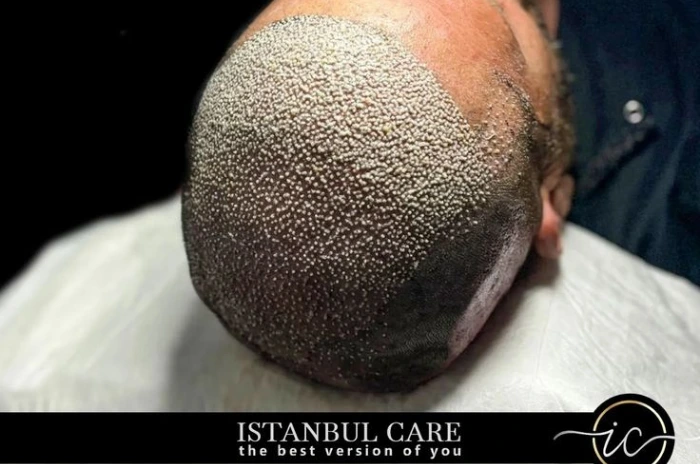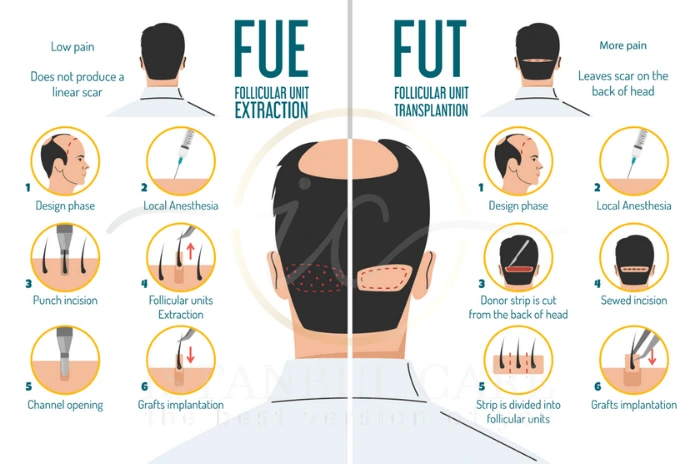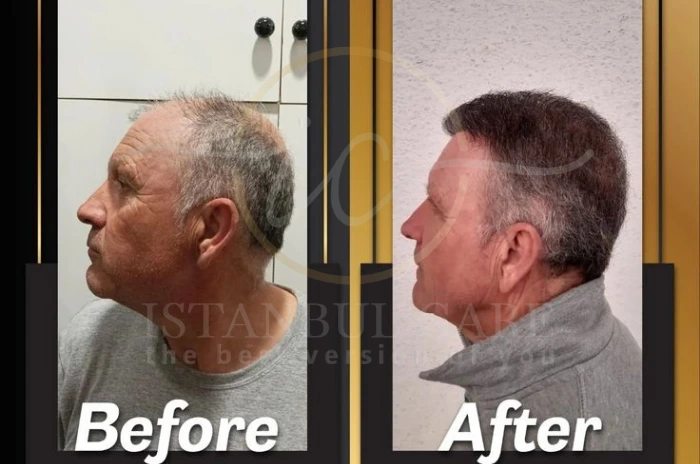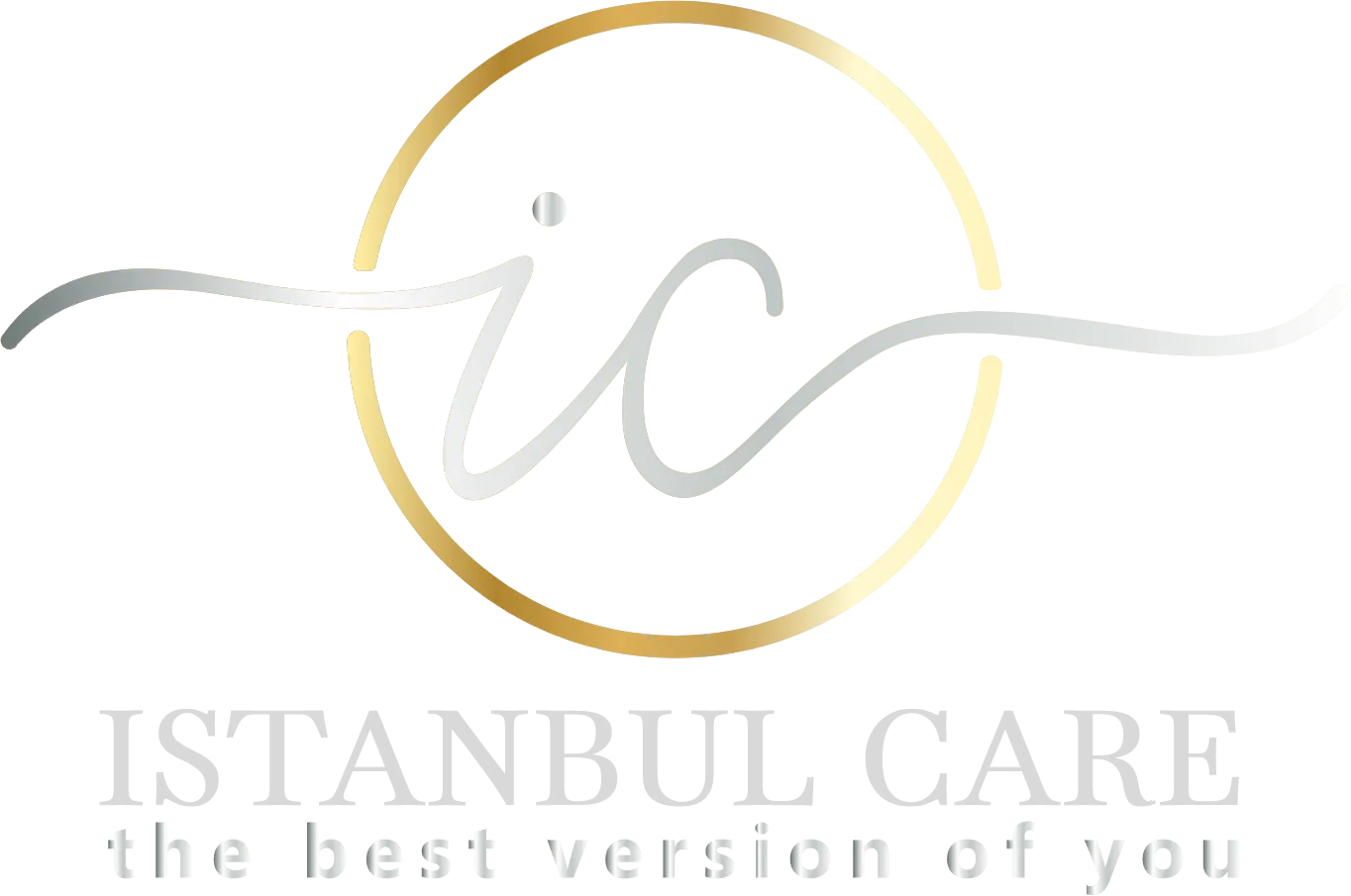Hair loss affects millions of people worldwide, causing not only physical changes but also significant psychological impact. Modern hair restoration techniques have evolved dramatically, offering hope to those experiencing hair loss. Today’s hair restoration options range from advanced surgical procedures to innovative non-surgical treatments, providing comprehensive solutions for various types and stages of hair loss.
Whether you’re dealing with early-stage thinning or advanced pattern baldness, understanding your hair restoration techniques is crucial for making informed decisions. This comprehensive guide explores everything from FUE vs FUT hair transplant procedures to non-surgical hair restoration methods, helping you navigate the complex world of hair loss solutions.

What Is Hair Restoration Surgery?
Hair restoration surgery represents the most advanced approach to treating permanent hair loss through surgical intervention. This sophisticated procedure involves transplanting healthy hair follicles from donor areas to regions experiencing baldness or thinning.
Transplants Grafts from Donor to Balding Areas
The fundamental principle of surgical hair restoration involves harvesting healthy hair follicles from areas resistant to hair loss, typically the back and sides of the head. These donor follicles are then carefully transplanted to balding or thinning areas. The process requires:
- Precise extraction of individual follicular units containing 1-4 hairs
- Meticulous preparation of recipient sites in the balding area
- Strategic placement to achieve natural-looking hair growth patterns
The donor area selection is crucial because these hair follicles carry genetic resistance to DHT hormone, ensuring long-term survival in their new location. Surgeons must carefully evaluate donor density and plan extraction patterns to avoid over-harvesting that could create visible thinning. Each follicular unit transplant FUT or follicular unit extraction FUE graft must be handled with extreme care to maintain viability. The recipient site preparation involves creating tiny incisions at precise angles and depths to accommodate the incoming follicles while maintaining natural growth direction.
How Modern Techniques Improve Natural Results
Contemporary hair restoration techniques have revolutionized the field through technological advances and refined methodologies. Modern procedures focus on:
- Creating natural hairlines that complement facial features
- Achieving optimal density while preserving donor hair reserves
- Minimizing trauma to existing hair follicles during the procedure
Advanced microscopy allows surgeons to examine each graft under high magnification, ensuring only the healthiest follicles are selected for transplantation. Computer-assisted design tools help create mathematically precise hairlines that look completely natural as patients age. The introduction of fast FUE recovery protocols has reduced healing time while improving graft survival rates. Modern preservation solutions keep extracted follicles viable for extended periods, allowing surgeons to work with greater precision without time pressure.
Best Performed by Hair Restoration Specialists
Successful hair transplant procedures require specialized expertise and experience. Qualified specialists possess:
- Extensive training in follicular unit transplant FUT and follicular unit extraction FUE techniques
- Artistic skills to design natural-looking hairlines
- Deep understanding of hair growth patterns and scalp anatomy
Complete Hair Restoration Methods
Modern hair restoration encompasses a comprehensive range of treatment options designed to address various types and stages of hair loss. Understanding these methods helps patients make informed decisions about their treatment journey.
Medical vs. Surgical Solutions Compared
Hair restoration options fall into two primary categories: medical and surgical approaches. Medical treatments include:
- Topical applications like minoxidil for hair growth stimulation
- Oral medications such as finasteride for hair loss prevention
- Injectable therapies like platelet-rich plasma process treatments
Medical treatments work by supporting existing hair follicles and slowing the progression of hair loss, making them ideal for early-stage intervention. These non-surgical hair restoration methods require ongoing commitment but offer the advantage of no surgical risks or recovery time. Surgical vs non-surgical hair options serve different patient populations, with medical treatments suitable for those with mild to moderate thinning. The combined hair treatments approach often yields the best results, using medical therapy to optimize scalp health before surgery and maintain results afterward.
Surgical solutions encompass:
- FUT hair transplant procedures for maximum graft yield
- FUE scarless extraction methods for minimal visible scarring
- DHI hair transplantation for direct implantation techniques
Personalized Treatment Plans
Effective hair restoration requires individualized approaches based on:
- Specific pattern and extent of hair loss
- Patient age, lifestyle, and expectations
- Available donor hair quality and quantity
Latest Technological Advancements
Recent innovations in hair restoration techniques include:
- ARTAS system robotic assistance for precise follicle extraction
- Advanced imaging systems for optimal graft placement
- Improved preservation solutions for enhanced follicle survival
Understanding Hair Restoration Options
Before exploring specific treatments, it’s essential to understand the underlying causes of hair loss and when restoration treatment becomes necessary.
Why Hair Loss Happens (Common Causes)
Hair loss occurs due to various factors affecting the natural hair growth cycle:
- Androgenetic alopecia (pattern baldness) caused by DHT sensitivity
- Hormonal changes during pregnancy, menopause, or thyroid disorders
- Medical conditions such as alopecia areata or scalp infections
- Medications, stress, or nutritional deficiencies
Understanding the root cause of hair loss is essential for selecting appropriate hair restoration options that address the underlying problem rather than just symptoms. Androgenetic alopecia affects over 80% of men and 40% of women, making it the most common reason people seek restoration treatment. Hormonal fluctuations can trigger temporary or permanent hair loss, requiring different therapeutic approaches depending on the underlying cause. Stress-related hair loss often responds well to non-surgical hair restoration methods combined with lifestyle modifications.
Early Signs You Might Need Restoration
Recognizing early hair loss indicators helps determine appropriate treatment timing:
- Gradual thinning at the crown or temples
- Widening part lines or visible scalp through hair
- Increased hair shedding during washing or brushing
- Family history of pattern baldness
How Restoration Differs from Regular Treatments
Hair restoration provides permanent solutions through:
- Relocating genetically resistant hair follicles to balding areas
- Creating new hair growth in previously bald regions
- Offering long-term results that don’t require continuous treatment
Surgical Hair Restoration Options
Surgical hair restoration offers the most comprehensive solution for significant hair loss, providing permanent results through various advanced techniques.
Follicular Unit Grafting (FUT)
FUT hair transplant remains a popular choice for patients requiring large numbers of grafts in a single session.
Strip Removal Method
The strip grafting technique involves:
- Removing a strip of hair-bearing scalp from the donor area
- Microscopically dissecting the strip into individual follicular units
- Preparing thousands of grafts for transplantation in one procedure
The FUT hair transplant strip method allows surgeons to harvest the maximum number of grafts in a single session, making it ideal for patients requiring extensive coverage. This technique requires skilled surgical assistants who can carefully dissect the strip under high-powered microscopes to separate individual follicular units without damage. The linear closure of the donor site is performed using advanced techniques like trichophytic closure to minimize visible scarring. Recovery from strip grafting typically takes 10-14 days for initial healing, with the donor area protected during the early healing phase.
Ideal for High Graft Needs
FUT hair transplant procedures excel when:
- Patients require 2,000-4,000 grafts or more
- Maximizing donor hair utilization is priority
- Bulk hair restoration is needed for extensive balding

Follicular Unit Extraction (FUE)
FUE scarless extraction has gained popularity due to its minimally invasive nature and fast FUE recovery times.
Individual Follicle Harvesting
The follicle extraction process involves:
- Using specialized punches to extract individual follicular units
- Preserving follicles in optimal storage solutions
- Maintaining graft integrity throughout the procedure
FUE scarless extraction requires exceptional precision and skill, as each follicle must be carefully removed without damaging surrounding tissue or the follicle itself. The procedure uses micro-punches ranging from 0.7mm to 1.0mm in diameter, selected based on the patient’s hair characteristics and follicle size. Advanced storage solutions containing ATP and other nutrients keep extracted follicles healthy during the harvesting and implantation process. The fast FUE recovery advantage comes from the minimal trauma to surrounding tissue, allowing patients to return to normal activities much sooner than traditional methods.
Minimal Scarring and Short Recovery
FUE scarless benefits include:
- No linear scar formation in the donor area
- Ability to wear hair very short without visible scarring
- Reduced post-operative discomfort and faster healing
DHI Hair Transplantation
DHI hair transplantation represents an advanced variation of FUE technique, offering:
- Direct implantation using specialized Choi pens
- Reduced handling time for extracted follicles
- Enhanced precision in graft placement and angle control
Robotic-Assisted Extraction
The ARTAS system provides:
- Computer-guided follicle selection and extraction
- Consistent harvesting quality and speed
- Reduced human error in graft procurement
Preparing for Hair Restoration Surgery
Proper preparation ensures optimal outcomes and minimizes complications during hair restoration surgery.
Review Medical Conditions and Medications
Pre-surgical preparation requires:
- Comprehensive medical history review
- Discontinuation of blood-thinning medications
- Assessment of scalp condition and hair characteristics
- Evaluation of realistic expectations and goals
Patient safety protocols require thorough screening for conditions that might affect healing or surgical outcomes, including diabetes, autoimmune disorders, and bleeding conditions. Certain medications like aspirin, warfarin, and some herbal supplements must be stopped well before surgery to prevent excessive bleeding during the procedure. The surgeon will evaluate scalp laxity, skin thickness, and existing hair density to determine the most appropriate surgical approach. Psychological readiness is equally important, as unrealistic expectations can lead to dissatisfaction even with technically successful procedures.
Stop Smoking and Dye Grey Hair
Essential pre-operative steps include:
- Cessation of smoking to improve healing and graft survival
- Avoiding hair coloring treatments before surgery
- Maintaining good scalp hygiene and health
- Following specific pre-operative instructions from your surgeon
Non-Surgical Hair Restoration Options
Non-surgical hair restoration provides effective alternatives for patients seeking less invasive treatments or complementary therapies to surgical procedures.
Platelet-Rich Plasma (PRP) Therapy
Platelet therapy scalp treatments harness the body’s natural healing factors to stimulate hair growth.
How PRP Treatment Works
The platelet-rich plasma process involves:
- Drawing a small amount of the patient’s blood
- Concentrating platelets through centrifugation
- Injecting the PRP solution into the scalp to stimulate follicles
Platelet therapy scalp treatments harness growth factors naturally present in the patient’s blood to stimulate dormant hair follicles and improve scalp circulation. The centrifugation process concentrates platelets to 3-5 times normal levels, creating a powerful growth factor cocktail that promotes cellular regeneration. The injection technique requires precise placement at the level of the hair bulb, typically 4-6mm deep, to ensure optimal contact with target follicles. Multiple treatment zones are covered during each session, with the scalp numbed beforehand to minimize discomfort during the injection process.
Timeline for Visible Results
PRP results time typically follows this pattern:
- Initial treatments performed monthly for 3-4 sessions
- Visible improvements appear after 3-6 months
- Maintenance treatments every 6-12 months for sustained results
Laser Therapy and Microneedling
Laser hair therapy combines multiple approaches for enhanced follicle stimulation.
Low-Level Laser Stimulation
LLLT scalp cap devices provide:
- Specific wavelengths of light to stimulate cellular activity
- Improved blood circulation to hair follicles
- Enhanced nutrient delivery to the scalp
Use Regularly for Months
Laser cap usage requires:
- Daily treatments of 20-30 minutes
- Consistent use for 6-12 months to see results
- Ongoing maintenance for sustained benefits
Low-Level Laser Therapy (LLLT)
LLLT hair therapy represents a scientifically-backed approach to hair growth stimulation through:
- FDA-cleared devices for home or clinical use
- Photobiomodulation to energize follicular cells
- Laser cap hair growth promotion without side effects
Topical and Oral Medications
Pharmaceutical hair loss solutions provide accessible and proven treatments for various stages of hair loss.
Minoxidil (Rogaine)
Minoxidil for hair growth remains one of the most widely used treatments worldwide.
FDA-Approved Topical Solution
Rogaine topical solution offers:
- Proven efficacy in clinical trials
- Available in 2% and 5% concentrations
- Suitable for both men and women with pattern baldness
Affordable and Suitable for All Hair Types
Minoxidil results demonstrate:
- Cost-effective treatment option
- Compatibility with various hair textures and types
- Gradual improvement over 3-6 months of consistent use
Finasteride (Propecia®)
Finasteride hair loss treatment targets the hormonal cause of pattern baldness.
Blocks DHT to Reduce Hair Loss
Propecia DHT blocker mechanism includes:
- Inhibiting 5-alpha reductase enzyme
- Reducing dihydrotestosterone (DHT) production
- Preserving existing hair and promoting regrowth
Effective After Long-Term Use
Finasteride effectiveness improves with:
- Consistent daily usage over months and years
- Combination with other treatments for enhanced results
- Regular monitoring by healthcare professionals
Modern Hair Restoration Solutions
Contemporary hair restoration has evolved beyond traditional approaches, incorporating cutting-edge technologies and personalized treatment protocols.
How Today’s Treatments Differ from Old Methods
Modern hair restoration techniques offer significant advantages:
- Minimally invasive procedures with reduced downtime
- Natural-looking results that are undetectable
- Combined hair treatments for comprehensive coverage
- Advanced preservation methods for better graft survival
Customized Plans for Different Hair Loss Types
Today’s hair restoration options address:
- Early-stage thinning with preventive measures
- Advanced pattern baldness with surgical intervention
- Specialized conditions requiring targeted approaches
Combining Techniques for Best Results
Surgical vs non-surgical hair combinations provide:
- Enhanced overall outcomes through multiple modalities
- Faster visible results with sustained improvements
- Optimized hair restoration timeline for patient goals
Choosing the Right Hair Restoration Method
Selecting appropriate hair restoration techniques requires careful consideration of multiple factors affecting treatment outcomes and patient satisfaction.
Compare Surgical vs Non-Surgical Options
Hair restoration options comparison reveals:
- Surgical procedures offer permanent, dramatic results
- Non-surgical treatments provide gradual improvement with ongoing maintenance
- Best hair loss treatment depends on individual circumstances and goals
Treatment Method Results Timeline Cost Range Recovery Time Best For FUT Hair Transplant 6-12 months $8,000-15,000 10-14 days Extensive baldness, high graft needs FUE Scarless 6-12 months $10,000-20,000 5-7 days Moderate baldness, prefer short hair DHI Hair Transplantation 6-12 months $12,000-25,000 5-7 days Precision placement, younger patients PRP Results 3-6 months $500-1,500/session Same day Early hair loss, maintenance Minoxidil for Hair 3-4 months $20-50/month None Mild to moderate thinning Finasteride Hair Loss 6-12 months $30-80/month None Pattern baldness prevention LLLT Hair Therapy 4-6 months $2,000-4,000 None Mild thinning, maintenance
Combine Treatments for Better Results
Combined hair treatments strategies include:
- Pre-surgical medical therapy to optimize scalp condition
- Post-surgical maintenance with topical or oral medications
- Complementary therapies like PRP or laser therapy
Comparing Cost vs. Results
Hair restoration costs vary significantly based on:
- Type of treatment selected and complexity required
- Geographic location and clinic reputation
- Number of grafts needed or treatment sessions required
Recovery Time for Each Option
Hair transplant recovery timelines differ:
- FUE vs FUT hair transplant recovery periods
- Non-surgical treatments with minimal downtime
- Hair restoration timeline expectations for visible results

Understanding Recovery and Results Timing
Hair restoration success depends on understanding realistic timelines and maintaining proper post-treatment care protocols.
Expect 3-6 Months for Visible Growth
Hair regrowth time follows predictable patterns:
- Initial shedding of transplanted hair within 2-4 weeks
- New growth emergence after 3-4 months
- Significant improvement visible by 6-12 months
- Final results achieved within 12-18 months
Continue Maintenance for Long-Term Success
Long-term hair care ensures sustained results through comprehensive maintenance strategies.
Preserving Existing Hair
Hair restoration maintenance includes:
- Continued use of proven medications like finasteride or minoxidil
- Regular scalp care and gentle hair handling practices
- Protection from environmental damage and styling trauma
Boosting Transplant Results
Enhancement strategies involve:
- PRP therapy sessions to support transplanted follicles
- Nutritional support for optimal hair health
- Lifestyle modifications to promote overall hair wellness
Annual Check-ups
Professional monitoring provides:
- Assessment of treatment progress and results
- Adjustments to maintenance protocols as needed
- Early detection of any hair loss progression
Possible Side Effects After Surgery
Understanding potential complications helps patients make informed decisions about hair restoration surgery and prepare for the recovery process.
Common Pain, Redness, and Temporary Hair Loss
Hair transplant risks include typical post-surgical symptoms:
- Mild to moderate discomfort at donor and recipient sites
- Temporary swelling and redness lasting several days
- Shock loss of existing hair around transplanted areas
- Scab formation and healing at graft sites
Most Side Effects Resolve Within Months
Recovery progression typically involves:
- Initial discomfort subsiding within 7-10 days
- Swelling and redness resolving within 2-3 weeks
- Complete healing of donor and recipient areas within 2-3 months
- Normal scalp sensation returning gradually over several months
Who Is a Good Candidate?
Determining candidacy for hair restoration involves comprehensive evaluation of multiple factors affecting treatment success and patient satisfaction.
Those with Permanent Pattern Baldness
Ideal patient characteristics include:
- Stable pattern of hair loss for at least 1-2 years
- Sufficient donor hair density and quality
- Realistic expectations about achievable results
- Good overall health and healing capacity
Restores Hair in Other Areas
Hair restoration applications extend beyond scalp treatments:
- Eyebrow reconstruction following trauma or over-plucking
- Beard and mustache enhancement for facial hair restoration
- Body hair transplantation for chest or other areas
- Scar camouflage through follicular unit placement
The Consultation Process
Professional evaluation ensures appropriate treatment selection and optimal outcomes through comprehensive assessment and planning.
Hair and Scalp Analysis
Thorough examination includes:
- Donor hair evaluation for quantity and quality assessment
- Scalp flexibility and elasticity testing
- Hair caliber and density measurements
- Pattern and progression of hair loss documentation
3D Imaging for Planning
Advanced technology provides:
- Computer modeling of expected results
- Virtual hairline design and preview
- Graft distribution planning and optimization
- Patient education through visual demonstrations
Realistic Goal Setting
Consultation establishes:
- Achievable outcomes based on individual circumstances
- Timeline expectations for visible results
- Maintenance requirements and ongoing care
- Alternative options if initial choices aren’t suitable
Risks and Considerations
Understanding potential complications and limitations helps patients make informed decisions about hair restoration treatments.
Potential Side Effects
Hair transplant risks may include:
- Infection at surgical sites requiring antibiotic treatment
- Bleeding complications during or after surgery
- Nerve damage resulting in temporary or permanent numbness
- Poor healing leading to visible scarring
Realistic Outcome Expectations
Patient education emphasizes:
- Natural results require time and may need multiple sessions
- Individual healing responses vary significantly
- Some procedures may need revision or touch-up treatments
- Ongoing hair loss may require additional interventions
Choosing a Qualified Specialist
Patient safety depends on:
- Board certification in relevant medical specialties
- Extensive experience with chosen surgical techniques
- Proper facility accreditation and safety protocols
- Comprehensive before-and-after portfolio review
Costs and Global Options
Hair restoration costs vary significantly worldwide, creating opportunities for medical tourism while requiring careful consideration of quality and safety factors.
Price Varies by Country and Clinic
Cost per graft differences reflect:
- Regional labor costs and economic conditions
- Clinic reputation and surgeon experience levels
- Technology and equipment used in procedures
- Included services and hair transplant aftercare protocols
| Location | Average Cost per Graft | Typical Total Cost |
|---|---|---|
| United States | $3-8 | $8,000-20,000 |
| Turkey | $1-2 | $2,000-5,000 |
| India | $0.50-1.50 | $1,500-4,000 |
| Mexico | $1.50-3 | $3,000-8,000 |
Consider All-Inclusive Packages
Transplant vacation packages often include:
- Bundled transplant pricing covering all procedures and medications
- Accommodation and transportation arrangements
- Translation services and patient coordination
- Post-operative care and follow-up consultations
Speak with our expert Hair Transplantation specialists

Speak with our expert Hair Transplantation specialists
We’re ready to answer your questions
FAQs for Hair Restoration Surgery and Modern Hair Loss Solutions
Hair restoration surgery involves transplanting healthy hair follicles from donor areas to balding regions, creating permanent new hair growth through advanced surgical techniques.
The primary surgical hair restoration methods include FUT hair transplant (strip method), FUE scarless extraction, and DHI hair transplantation for direct implantation.
Yes, non-surgical hair restoration includes PRP results therapy, LLLT hair therapy, minoxidil for hair growth, and finasteride for hair loss prevention.
Hair regrowth time typically shows visible improvements after 3-6 months, with final results in 12-18 months, and transplanted hair provides permanent results.
Good candidates have stable pattern baldness, sufficient donor hair evaluation results, realistic expectations, and overall good health for healing.
Hair restoration costs range from $1,500-20,000 depending on technique, location, and number of grafts needed for complete coverage.
Hair transplant risks include temporary swelling, mild discomfort, shock loss of existing hair, and rare complications like infection or poor healing.
Combined hair treatments often provide superior results by integrating surgical procedures with medical therapies and maintenance protocols for optimal outcomes.

